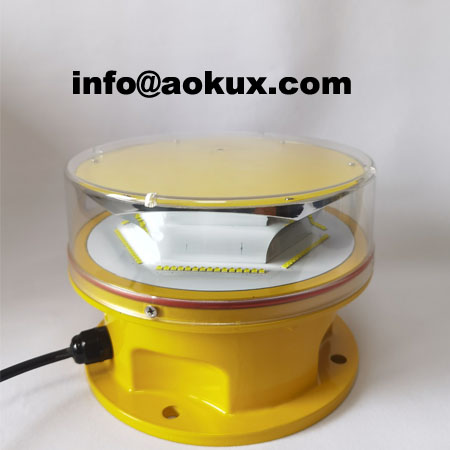
Illuminate the Skies with Aircraft Obstruction Warning Lights
Introduction
In today's ever-expanding world of aviation, ensuring the safety of aircraft is paramount. One crucial aspect of aviation safety is the use of aircraft obstruction warning lights. These beacons, perched atop tall structures like buildings, towers, and wind turbines, play a vital role in safeguarding aerial navigation, especially during low visibility conditions. This article will delve into the importance of aircraft obstruction warning lights, their benefits, and how they contribute to the overall safety of air travel.
1. Enhancing Visibility and Preventing Collisions
Aircraft obstruction warning lights serve as a visual indication for pilots, making them aware of potential obstacles that may obstruct their flight path. By emitting a steady or flashing light, these signals enhance visibility and act as a beacon, guiding pilots away from hazardous zones. This essential feature helps prevent mid-air collisions, especially during night flights or in poor weather conditions when visibility is compromised.
2. Ensuring Compliance with Aviation Regulations
The aviation industry adheres to strict regulations to ensure the safety of passengers and crew members. Installing aircraft obstruction warning lights on tall structures is a legal requirement in many jurisdictions. Compliance with these regulations not only fosters a culture of safety but also avoids penalties and legal consequences. Moreover, adherence to these standards demonstrates an organization's commitment to upholding aviation protocols and enhances its reputation within the industry.
3. Protecting Public Safety and Infrastructure
Beyond aviation safety, aircraft obstruction warning lights play a pivotal role in safeguarding public safety and protecting critical infrastructure. Tall structures, such as communication towers and wind turbines, are often located near residential areas, highways, or important infrastructure. By providing a clear and visible warning, these lights help prevent aircraft from colliding with structures, reducing the risk of damage and potential harm to people on the ground.

4. Environmental Considerations
In recent years, sustainability has become an increasingly crucial aspect of all industries, including aviation. The use of energy-efficient and eco-friendly aircraft obstruction warning lights aligns with the industry's commitment to reducing its carbon footprint. Switching to LED-based lights significantly reduces power consumption while maintaining optimal visibility for pilots. This shift contributes to a greener aviation sector and helps organizations meet their environmental targets.
|
Aircraft Obstruction Warning Lights |
Aircraft Obstruction Warning Light |
 Previous:
Aviation Obstruction Lamp
Previous:
Aviation Obstruction Lamp
 Next:
Obstruction Light price
Next:
Obstruction Light price